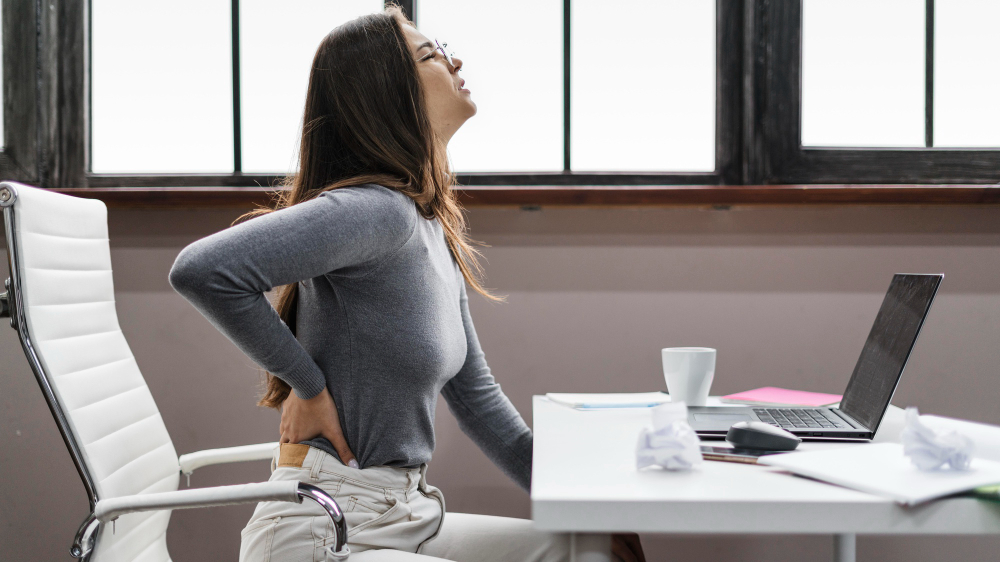If you’ve ever thought of your back as the pillar supporting a grand structure, Pilates can be the architect ensuring its strength and stability. Pilates can offer a path to alleviate your back pain through targeted movements and focused breathing.
Imagine a routine that relieves your discomfort and equips you with tools to prevent future issues. The key lies in understanding how Pilates can transform your core strength, flexibility, and posture.
Discover the potential of this practice and unlock a healthier, pain-free back for the long haul.
Benefits of Pilates for Back Pain
Pilates offers significant relief for individuals suffering from back pain by strengthening core muscles and improving flexibility. This exercise focuses on developing a strong core, which helps support the spine and alleviate strain on the back.
By regularly engaging in Pilates, you can improve your posture, which is crucial for reducing back pain caused by poor alignment. Additionally, Pilates helps increase overall body awareness, allowing you to move more efficiently and with less discomfort.
The controlled movements and emphasis on proper alignment in Pilates also contribute to better spinal health, which can decrease back pain over time. Incorporating Pilates into your routine can be a beneficial way to manage and potentially alleviate back pain.
Core Strengthening Exercises
Incorporating targeted exercises is essential to strengthen your core and improve your back health. Pilates offers various core strengthening exercises that focus on engaging and stabilizing your abdomen, lower back, and pelvis muscles. These exercises include movements like the hundred, plank variations, and leg circles, which help build strength and endurance in your core muscles.
Improving Flexibility Through Pilates
Improving flexibility is a key component of enhancing your overall physical well-being when engaging in core strengthening exercises like Pilates. Pilates focuses on dynamic stretching and lengthening of muscles, helping to increase your range of motion and flexibility.
By incorporating exercises that target flexibility, such as leg circles and spine stretches, you can improve your joint mobility and reduce the risk of injury. Enhanced flexibility also allows for better body alignment during movements, promoting proper muscle engagement and function.
Regular practice of Pilates can improve flexibility in the muscles and surrounding connective tissues, leading to better overall physical performance and reduced back pain.
Enhancing Body Alignment and Posture
Enhance your body alignment and posture by focusing on proper positioning and spinal alignment during Pilates exercises to support a strong and stable core. Maintaining a neutral spine, engaging your core muscles, and aligning your shoulders, hips, and feet are key elements in enhancing body alignment and posture.
Throughout Pilates movements, keep your spine elongated and avoid overarching or rounding of the back. Emphasize proper alignment by imagining a string pulling the crown of your head towards the ceiling, creating space between each vertebra.
Preventing Future Back Pain
By incorporating regular Pilates practice into your routine, you can effectively strengthen your core muscles and improve flexibility to prevent future back pain. Strong core muscles support your spine, reducing the risk of strain and injury.
Pilates exercises focus on engaging and stabilizing the core, which helps maintain proper alignment and posture throughout daily activities. Improved flexibility from Pilates also ensures that your muscles can move through their full range of motion without causing undue stress on your back.
Frequently Asked Questions
Can Pilates Worsen Back Pain if Done Incorrectly?
If done incorrectly, Pilates can worsen back pain. Focus on proper form and technique. Seek guidance from a certified instructor.
Listen to your body’s signals. Start slowly, gradually building strength. Stay mindful during each movement to prevent injury.
Are There Any Specific Pilates Exercises to Avoid if You Have a History of Back Injuries?
Avoid specific Pilates exercises like full sit-ups, double leg lifts, and deep spinal twists if you have a history of back injuries. These moves can strain your back.
Always consult a qualified instructor for modifications.
How Long Does It Typically Take to See Improvement in Back Pain Through Pilates?
Typically, you can start feeling improvements in your back pain through Pilates within a few weeks of consistent practice. Results vary, but many individuals notice enhanced strength and flexibility and reduced discomfort relatively quickly.
It’s important to remember that everyone’s body is different, so the timeline for experiencing these benefits can vary. Consistency and proper form are key to seeing positive changes in your back pain.
Is It Safe to Practice Pilates for Back Pain During Pregnancy?
During pregnancy, it’s safe to practice Pilates for back pain with modifications. Always consult your healthcare provider and work with a certified instructor.
Pilates can help strengthen your core and improve posture.
Can Pilates Help With Chronic Back Conditions Such as Scoliosis or Herniated Discs?
When done correctly under professional guidance, Pilates can strengthen core muscles, improve flexibility, and enhance posture.
These benefits may help alleviate discomfort from chronic back conditions like scoliosis or herniated discs.
Conclusion
So, if you’re tired of dealing with back pain, try Pilates at pilatesrepublic.net.
It can help strengthen your core, improve flexibility, enhance your body alignment and posture, and prevent future back issues.
With regular practice, you’ll be on your way to a healthier, pain-free back.
Don’t wait any longer – start incorporating Pilates into your routine today and feel the difference it can make in your life.







